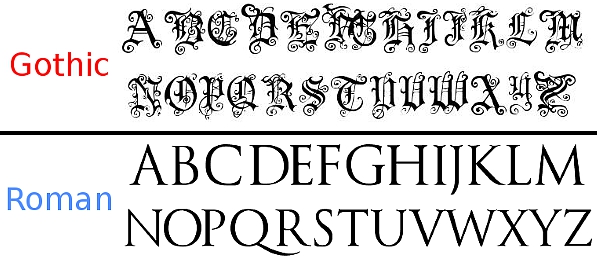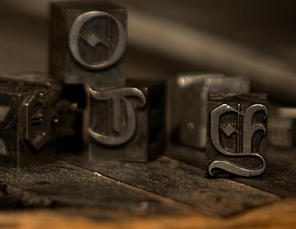The first thing Christians need to remember before tackling any issue about the King James Bible [KJB] is that there are Christian men and women out there who HATE the KJB, and they hate anyone who uses a KJB. It is fine to have questions and concerns about the KJB, but Christians need to be aware there are many other Christians out there who have a desire to cast doubt on God's Word, because they truly hate idea of having a pure and perfect Word of God that judges them, instead of them getting to be judge over God's Word. (i.e. If they don't like the way one part is translated, just go to another version until it says something that fits their personal preferences.)
I have had some Christians ask me about this issue in genuine concern, and other Christians who ask me about this because they want to cast doubt on God's Word. For example, Sye Tenbruggencate of proofthatgodexists.org wrote an email to me, asking the question about the 1611 and 1769 KJB -- "Which one has the perfect wording, and what is your ultimate authority on that?" Immediately after this question, he wrote, "I donít need or want you to answer that question for me," which means he is only seeking to cast doubt, not to gain understanding. When someone asks us these questions, we need to discern if they are asking us for knowledge, or if they are asking us just to minister questions, and cause confusion and division.
(Copy of the quoted letter is in this author's archives.)
Cease, my son, to hear the instruction that causeth to err from the words of knowledge.
-Proverbs 19:27
Neither give heed to fables and endless genealogies, which minister questions, rather than godly edifying which is in faith: so do.
-1 Timothy 1:4
For where envying and strife is, there is confusion and every evil work.
-James 3:16
Now I beseech you, brethren, mark them which cause divisions and offences contrary to the doctrine which ye have learned; and avoid them.
-Romans 16:17
- Typography: The font was changed from gothic to roman.
- Printing: The printing press errors were fixed.
- Spelling: A few spelling changes for standardization.
- Italics: Italicized words that were added by the translators.
- Apocrypha: The Apocryphal books were removed.
Today, we are used to a roman font. Perhaps, in your use of a computer, you have seen Times New Roman? That's a variation of the standard roman font that we are used to reading today. Gothic font is almost never used today because it can be difficult to read, and almost impossible to read by those who are new to the English language.

The following image is from the first edition of the 1611 KJB in its gothic font format. This is 2 Thessalonians 2:4; see if you can read it:

You can probably read most of it, but there are some words in there you either struggled with, or you are going to look up 2 Thessalonians right now to find those words. The purpose of the King James Bible was to give the common man a finalized book of how the words of the Bible should be translated from the preserved copies gathered from all over the world, and so obviously, we want the world to be able to read it as easily as possible, so it only makes sense to put it into a font that even a child can read.
The new-age versionists (or Bible-correcters, as I like to call them), will simply tell the laymen Christian that there were thousands of changes in 1769, but will not tell them what the changes were, and leaves the Christian dumbfounded on what to say. Bible-correcters only tell a little bit of truth, and leave the rest out on purpose, with the full intent to minister questions, cause confusion, and cast doubt.
Some of the scoffers will also say that they had to change it because the KJB was unreadable, which is also not true. Anyone today could still read the 1611 KJB in gothic font and still understand it, but it would take a bit longer to decipher that the 'S' looks like an 'F', and other such typographical standards that we are not used to today.
The shape of the letters was changed, but the doctrine and translation was not changed.
In 1629, Dr. Samual Ward & John Bois, both on the original committee of the King James translators, read through the 1611 printing press copy of the KJB, along with the hand-written finalized copy they made, and they found that there were 400 printing press errors that needed to be corrected. Again, this is NOT a change in doctrine or translation, this is simply the translators noting mistakes made by those building the framework for the printing press.
 |
Today, we are used to having scanners, copiers, and ink printers in our homes, where we can print off pages in seconds, but the original printing presses were incredibly time consuming with very tedious work. In the image above that depicted 2nd Thessalonians, each individual letter had to be set together, with proper spacing for words and verses, to form each page in a separate frame, and to print forwards, it all had to be set backwards! (The Bible contains 1,189 chapters, 31,102 verses, 773,693 words, and 3,566,480 letters.) |
|
Condsidering the Bible contains over 3.5 million letters, the fact that there were only 400 printing press errors is absolutely amazing! I'm surprised there were not more errors than that, considering that this was all set and measured by hand. The only reason there were 400 printing press errors is because the technology was still in its infant stages. (CLICK HERE to watch a live demonstration of setting individual letters in a type cast.) |
 |
Here is a video demonstration of the original printing press in action:
Proof reading the Bible takes a long time, and by 1638, approximately 70% of the printing press errors had been corrected, but there were still a few places that needed to be corrected. For example, in 1 John 5:12 from the printing press copy of the 1611:

He that hath the Son hath life; and he that hath not the Son of God hath not life.
-1 John 5:12
New-age version users will typically point out the corrections made by the 1769 edition, and try to get the KJB user to think that the KJB is the same as the modern new-age versions, but that is a deceptive lie. The "Bible correcters" want to make the KJB look as bad as they can from 400 printing press errors, but quickly overlook the changes made by new-age versions, like the
(See John Dyer, "NIV2011/NIV2010 Changes," www.biblewebapp.com, retrieved Mar 30, 2013, [http://www.biblewebapp.com/niv2011-changes/])
As you can see above, "Sonne" and "Son" are obviously spelled differently. However, "Sonne" and "Son" are the same word. Notice specifically that I did NOT say they have the same meaning, although they do, I said they are the SAME WORD with different spellings, and that distinction is very important.
The following are some examples of spelling changes that were made in the 1769 edition. In 1611, alternate spellings were used to fix the spacing of words so each verse could be properly aligned in nice, neat columns, and these were all standardized in 1769:
| 1611 | 1769 |
| begate | begat |
| bin | been |
| booke | book |
| borne | born |
| childe | child |
| dreame | dream |
| feare | fear |
| foorth | forth |
| foureteene | fourteen |
| hee | he |
| knewe | knew |
| publique | publick |
| shee | she |
| sinnes | sins |
| sleepe | sleep |
| sonne | son |
| tooke | took |
| untill | until |
| & | and |
Again, anyone can see that these are the same words, with two different spellings, but that's not what the new-age versions have done. The new-age versions have used completely different words altogether.
For example, the English Standard Version (as well as most others), says the following in 1Cor 7:2:
"But because of the temptation to sexual immorality, each man should have his own wife and each woman her own husband."
Nevertheless, to avoid fornication, let every man have his own wife, and let every woman have her own husband.
-1 Corinthians 7:2
Any translating that is done between any two languages require that some words must be added to fit the proper contextual meaning in the translation. New-age versions DO NOT include any indicators to let you know what words they added; they simply require you take their word for it. In the KJB, either italics, or brackets [depending on the format], are used to indicate words that were added by the King James translators.
Prior to the changes to make the text all roman font, the added words were put in a smaller roman font.

In fact, if you read through your KJB, you will notice that most of the text can still be read without the added italicized words. In another language, those extra words would be implied by the use their foreign words and phrasings, but the added words help to understand the context and meaning of the sentences. Here are a few examples with the use of brackets:
When Herod the king had heard [these things], he was troubled, and all Jerusalem with him.
-Matthew 2:3
Grace be unto you, and peace, from God our Father, and [from] the Lord Jesus Christ.
-1 Corinthians 1:3
And he is the propitiation for our sins: and not for ours only, but also for [the sins of] the whole world.
-1 John 2:2
The Apocrypha are seven books that are included in the Catholic bible as part of Scripture, but the those books are not inspired by God. (We will have an article on that in the future.) In the 1611 KJB, some of the Apocrypha books were included BETWEEN the Old Testament and New Testament for their historical significance, but they were NOT considered as part of Scripture.
In fact, during those days, almost no one outside the Catholic church accepted the Apocrypha books as Scripture. The King James translators only included it for its historical value, and gave six basic reasons they would not include the Apocrypha books with Scripture:
- None of the Apocrypha books was ever found in the Hebrew langauge.
- None of the writers claimed inspiration of God in writing the Apocryphal books.
- The Jewish Church never acknowledge the Apocryphal books as sacred Scripture.
- The first centuries before the Catholic church, Christians never included the Apocryphal books.
- The Apocryphal books contain many contradictory statements in themselves, and to the rest of Scripture.
- The Apocryphal books promote wicked practices as good works: lying, suicide, sorcerey, etc.
Since the Catholic church tries to deceive the masses by making them think the Apocryphal books are part of Scripture, it was thought best to remove them from the KJB, so no one would be confused about what was Scripture, and what was only included for historical significance.
(Read "Why I Use The King James Bible" here at creationliberty.com to get documentation that proves the Catholic church once made the Bible a banned book to prevent it from being read!)
And by 1769, all the needed changes were complete, the King James Bible was mass produced, and God's promises have remained true.
The words of the LORD are pure words: [as] silver tried in a furnace of earth, purified seven times. Thou shalt keep them, O LORD, thou shalt preserve them from this generation for ever.
-Psalm 12:6-7
In Jesus Christ's ministry, He did not always answer every man who asked Him a question. He knew there were some men that were not looking for an answer, and that an answer would never satisfy them anyway. I would recommend that Christians find out the intention of the person that asks you, "You use a KJB? Which revision? Hahaha!" Ask yourself, "Is this a person who wants an answer? Or is this a person who is trying to cast doubt, confusion, and minister questions?" You do not have to answer the scoffer, because the Bible condemns him already for his actions.
And finally, to the Christians who use a KJB, do not go around condemning men who do not use the KJB. There are some Christians out there who are saved by faith and repentance, but do not yet understand their Biblical foundations. Certainly, these new-age versions are from the bowels of the Devil, but men are converted only by our Lord Jesus Christ. If they will hear, God must give them acknowledging of the truth, and if they will not hear, there is nothing we can do and we must keep moving. No matter how wicked and deceptive a man might be to us, we must be gentle:
And the servant of the Lord must not strive; but be gentle unto all [men], apt to teach, patient, In meekness instructing those that oppose themselves; if God peradventure will give them repentance to the acknowledging of the truth; And [that] they may recover themselves out of the snare of the devil, who are taken captive by him at his will.
-2 Timothy 2:24-26
And when ye come into an house, salute it. And if the house be worthy, let your peace come upon it: but if it be not worthy, let your peace return to you. And whosoever shall not receive you, nor hear your words, when ye depart out of that house or city, shake off the dust of your feet.
-Matthew 10:12-14














![There is No Saving Grace Without Repentance [creationliberty.com]](../images/store13a.jpg)
![Why Christians Should Study The King James Bible [creationliberty.com]](../images/store15a.png)
![Wolves in Costume: Kent Hovind [creationliberty.com]](../images/store11a.jpg)
![Corruptions of Christianity: Seventh-day Adventism [creationliberty.com]](../images/store09a.png)
![501c3: The Devil's Church [creationliberty.com]](../images/store07a.jpg)
![Feminism: Castrating America [creationliberty.com]](../images/store04a.jpg)









![Why Millions of Believers on Jesus Are Going to Hell [creationliberty.com]](images/store05a.jpg)
![Corruptions of Christianity: Catholicism [creationliberty.com]](http://www.creationliberty.com/images/store14a.jpg)
![False Prophet Profiles: Kim Clement [creationliberty.com]](http://www.creationliberty.com/images/store12a.jpg)
![Christmas: Rejecting Jesus [creationliberty.com]](http://www.creationliberty.com/images/store10a.jpg)
![Christian Music: For The Love of Money [creationliberty.com]](images/store08a.png)
![Psychology: Hoodwinked by the Devil [creationliberty.com]](images/store06a.jpg)
